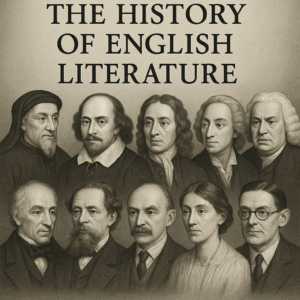1. Introduction to Charles Lamb Charles Lamb remains one of the most beloved essayists of the Romantic period. He wrote with a voice that was gentle, nostalgic, and deeply personal. Unlike the grand themes of Wordsworth or Shelley, Lamb explored Read More …
Category: The History of English Literature

The History of English Literature offers a rich exploration of the development of literary works from the earliest Anglo-Saxon texts to contemporary masterpieces. This category provides in-depth articles, study guides, quizzes, and timelines covering key literary periods such as the Old English era, Middle English literature, the Renaissance, Neoclassical Age, Romantic Movement, Victorian literature, and Modernist innovations. Whether you are a student, researcher, or literature enthusiast, you’ll find detailed analyses of major writers like Geoffrey Chaucer, William Shakespeare, John Milton, Jane Austen, Charles Dickens, and T.S. Eliot. Discover how historical events, cultural movements, and philosophical ideas shaped the evolution of English literature over the centuries. Enhance your understanding of literary techniques, themes, and genres as you navigate through the fascinating journey of English literary history. This resource is ideal for exam preparation, academic research, and anyone passionate about the legacy of English literary traditions.
Thomas De Quincey as a Writer: Dreams, Confessions, and Romantic Thought
Early Life and Education Thomas De Quincey was born in 1785 in Manchester, England. His father died early, and this shaped his emotional world. As a child, he showed extreme sensitivity and high intelligence. He read widely and loved literature Read More …
Mary Shelley as a Writer: Romanticism, Gothic Vision, and Innovation
1. Early Life and Literary Environment Mary Shelley was born in 1797 to literary parents. Her father, William Godwin, was a radical philosopher. Her mother, Mary Wollstonecraft, authored A Vindication of the Rights of Woman. This intellectual home shaped Mary Read More …
William Blake as a Poet
1. Blake’s Visionary Beginnings William Blake as a poet emerged through mystical visions. From childhood, he claimed to see angels, prophets, and spiritual landscapes. Unlike many writers, Blake did not draw inspiration solely from experience. Instead, he believed imagination gave Read More …
John Keats as a Poet
Introduction: John Keats as a Poet John Keats as a poet stands among the most celebrated figures in Romantic literature. He created intense, emotional, and sensual verse within a short life. His deep love for beauty, nature, and truth shines Read More …
P. B. Shelley as a Poet
P. B. Shelley as a Poet Introduction P. B. Shelley as a poet remains one of the most radical and visionary voices of the Romantic movement. His poetry speaks of rebellion, love, hope, despair, and unyielding idealism. Though his life Read More …
Lord Byron as a Poet
Lord Byron as a Poet Early Life and Literary AwakeningLord Byron as a poet began his journey with fire in his spirit. Born into nobility, he embraced both privilege and pain early on. However, Byron never conformed to aristocratic norms. Read More …
Samuel Taylor Coleridge as a Poet
Life and Vision of Coleridge Samuel Taylor Coleridge as a poet cannot be separated from his life. Born in 1772, his experiences shaped his poetic imagination. He believed the poet must see the unseen. Therefore, his works often blend dreams, Read More …
William Wordsworth as a Poet
Early Influences and Childhood William Wordsworth as a poet began by drawing deep inspiration from youthful experiences in the Lake District. Growing up near lakes, weeping willows, and rolling hills shaped his imagination. Moreover, he cherished simple rural life through Read More …
Romantic Age in English Literature: Key Features and Famous Writers
1. Introduction to the Romantic Age in English Literature The Romantic Age in English Literature began as a reaction against the Enlightenment’s rationalism. Writers embraced emotion, imagination, and natural beauty. This shift reflected broader social changes, including revolutions and industrialization. Read More …
